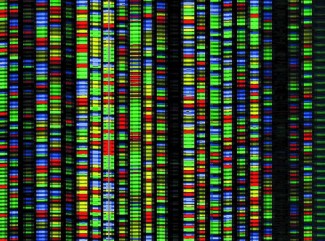In a study published in the new international scientific journal Neuroscience of Consciousness, Benjamin Rohaut, Inserm researcher, and Lionel Naccache, team leader of the " Picnic lab : Physiological Investigation of Clinically Normal and Impaired Cognition ", both being also clinicians attached to the Pitié-Salpêtrière hospital neurology department, AP-HP, provide evidence that the unconscious semantic processing of a word genuinely exists, but that it is subject to very strong conscious influences. A work conducted in collaboration with their colleagues from the Brain and Spine Institute – AP-HP/CNRS/Inserm/UPMC.
Experimental psychology is full of situations allowing to explore the depth and diversity of mental operations performed without our knowledge, in other words, unconsciously. For example, using the techniques of subliminal visual presentation, it is possible to" inject " a word in the brain of a volunteer, and then explore his psychological and cerebral fate using behavioural measures and functional brain imaging. Since the end of the 90s, several high impact studies have thus shown that the meaning of an image, a number or a "subliminal" word could be unconsciously represented in our mind/brain.
In the study led by Lionel Naccache, researchers provide evidence that the unconscious semantic processing of a word certainly exists, but that it is subject to very strong conscious influences.
To do so, they used French words such as : "band, crane, ice, lawyer, pitcher, second, letter, agreement, time, bar, cup ... ". These words share a common semantic property, have you noticed ?
In reality, each of these words is " polysemous ", and is thus associated with two (or more) different meanings. Each time such a word is presented to you, you can thus understand it in two different ways. Consciously, we perceive only one meaning at a time, as Descartes told, as early as 1649 in Passions of the soul : "we only have one single thought of a same thing at the same time ". The meaning of the word we consciously get to at any time, is likely to be influenced.
Therefore, if you read : SORBET then ICE, you are very likely to get to the culinary sense of the word ice : " sweetened and flavoured product obtained by icing a pasteurised mixture made of milk, cream or butter and eggs (ice cream made with eggs), syrup and fruit (ice cream made with syrup, sorbet)" (Larousse Dictionary), while the MIRROR – ICE pair will strongly guide your semantic analysis towards the " homogeneous and properly reheated glass sheet, with both perfectly flat and parallel sides with which mirrors and window glasses are made".
The authors have presented word triplets to the volunteers of this experience while recording their brain activity using a headset of electrodes placed on their head. Each trial started with the presentation of a first word which was always visible, and allowed to define a specific semantic context (e.g. SORBET). Then the second word was flashed on screen, and was either subliminal or consciously visible. The third word then appeared and was always consciously visible. It was used as a target stimulus to which the subjects had to answer by pressing a button in order to indicate whether it was a real word (ex : WINDOW GLASS) or a pronounceable chain of letters which did not correspond to a word in the lexicon, referred to as a pseudo-word, such as "DRAIE" (scrape). When the middle word was semantically related to the target word, the subjects answered more quickly. It is referred to as priming effect. This priming effect was also revealed in the analysis of brain activities.
When the polysemous word (middle word of the triplet) was consciously visible, a priming effect was found only for consistent meaning with the contextual word introduced at the beginning of each trial (word 1). For example, when we introduced the triplet : TRACTOR – CRANE – SHIPYARD, we could find the priming effect of the word SHIPYARD with the word CRANE, whereas this effect was absent in triplets such as : BIRD – CRANE – SHIPYARD. Analysing electrical brain activity confirmed and clarified this result. The absence of priming effect for the non-contextualised meaning of the polysemous word indicates that it was simply not analysed by the subjects. Conscious semantic processing is therefore influenced by conscious context.
The main result of this work lies in the discovery that the same applies to polysemous words unconscious perception . When the polysemous word (word 2) was subliminally presented, the authors found semantic priming effects comparable to those observed in conscious reading condition : only the meanings of the subliminal polysemous word consistent with the contextual word were unconsciously analysed.
This series of experiments demonstrates that unconscious cognition is not only very complex, since it can reach the level of semantics (the meaning of words), but also that it is extremely sensitive to conscious influences. At every moment, our conscious posture influences the nature of mental operations occuring unconsciously in us.
"This work, which brings together neuroscience with psycholinguistics of the French language also illustrates the potential of scientific multi-disciplinary approaches", conclude Lionel Naccache and his colleagues.
Sources
Unconscious semantic processing of polysemous words is not automatic.
Benjamin Rohaut, F.-Xavier Alario, Jacqueline Meadow, Laurent Cohen, Lionel Naccache, Neuroscience of Consciousness, 6 Août 2016.
http://nc.oxfordjournals.org/content/2016/1/niw010







